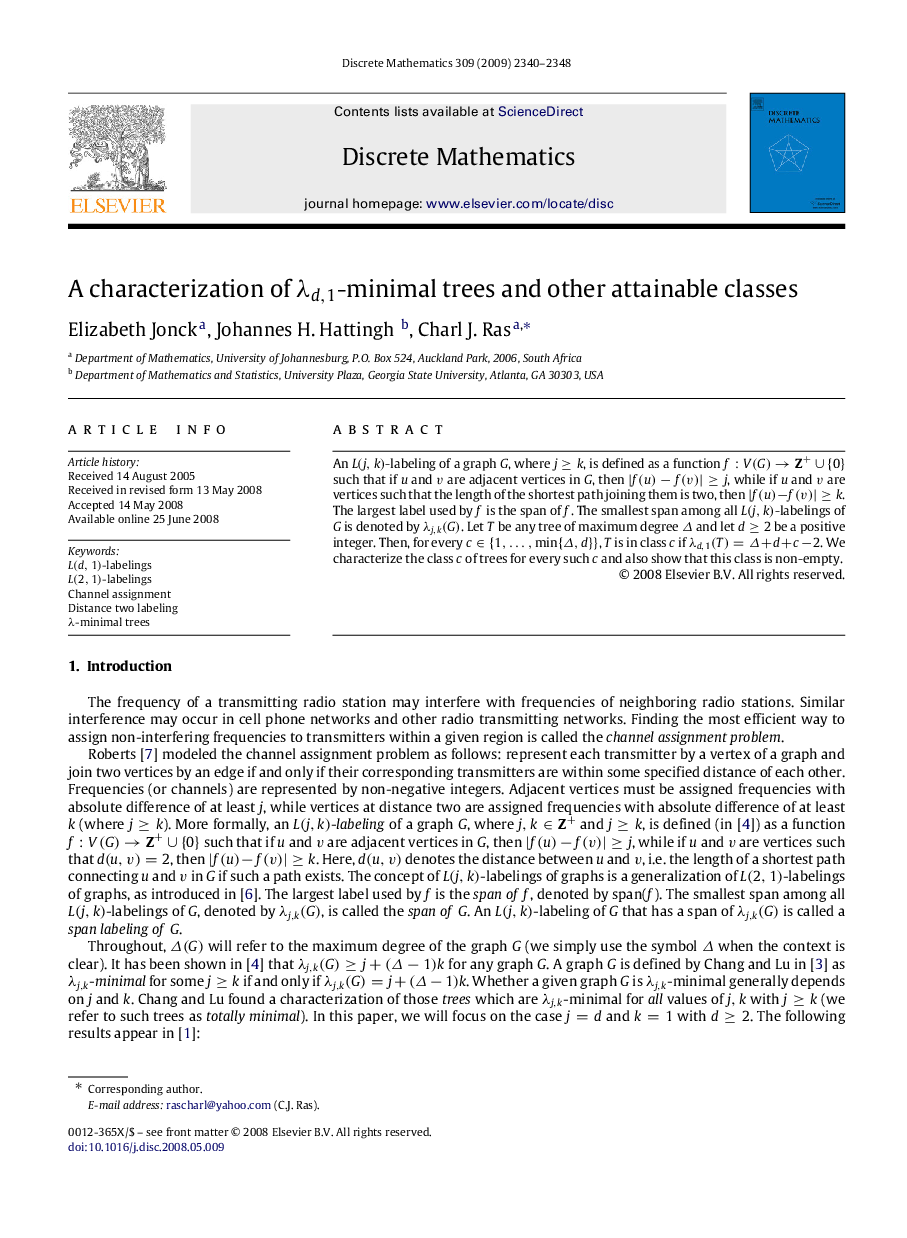| Article ID | Journal | Published Year | Pages | File Type |
|---|---|---|---|---|
| 4649758 | Discrete Mathematics | 2009 | 9 Pages |
Abstract
An L(j,k)L(j,k)-labeling of a graph GG, where j≥kj≥k, is defined as a function f:V(G)→Z+∪{0} such that if uu and vv are adjacent vertices in GG, then |f(u)−f(v)|≥j|f(u)−f(v)|≥j, while if uu and vv are vertices such that the length of the shortest path joining them is two, then |f(u)−f(v)|≥k|f(u)−f(v)|≥k. The largest label used by ff is the span of ff. The smallest span among all L(j,k)L(j,k)-labelings of GG is denoted by λj,k(G)λj,k(G). Let TT be any tree of maximum degree ΔΔ and let d≥2d≥2 be a positive integer. Then, for every c∈{1,…,min{Δ,d}}c∈{1,…,min{Δ,d}}, TT is in class cc if λd,1(T)=Δ+d+c−2λd,1(T)=Δ+d+c−2. We characterize the class cc of trees for every such cc and also show that this class is non-empty.
Related Topics
Physical Sciences and Engineering
Mathematics
Discrete Mathematics and Combinatorics
Authors
Elizabeth Jonck, Johannes H. Hattingh, Charl J. Ras,
